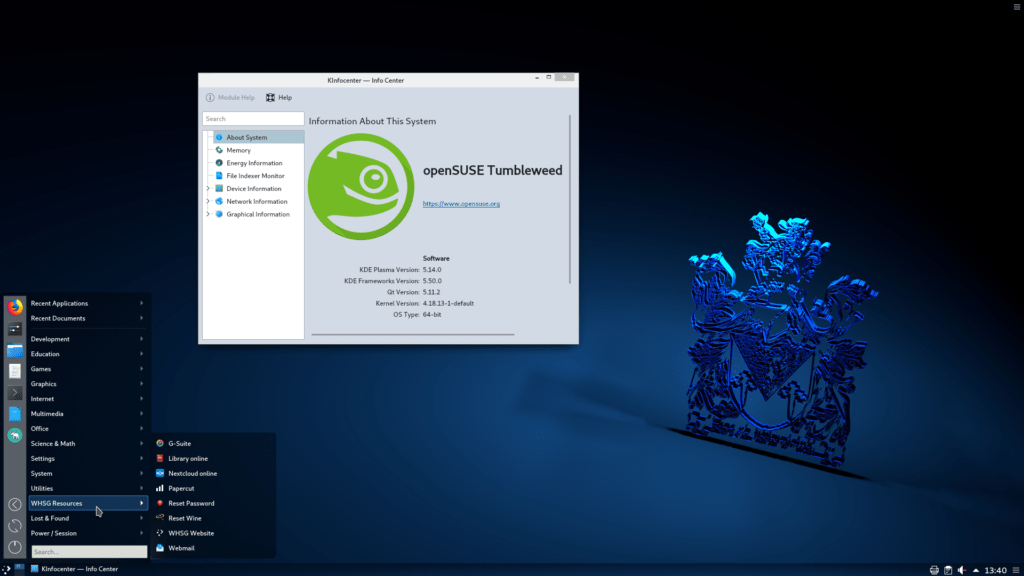Linux is a popular operating system used by many schools due to its stability, security, and cost-effectiveness. Here are some of the reasons why Linux is a good choice for schools:
- Cost: One of the biggest advantages of Linux is that it’s free and open source, which means that schools can save a significant amount of money on software licenses.
- Customizability: Linux provides a high degree of customizability, which allows schools to tailor the operating system to their specific needs.
- Security: Linux is known for its security features and is less prone to viruses and other malicious software. This makes it a safe choice for schools, which often handle sensitive information.
- Compatibility: Linux is compatible with a wide range of hardware, which makes it an ideal choice for schools that may have limited budgets and need to use older or less expensive equipment.
- Community support: Linux has a large community of users and developers who are constantly working on improving the operating system. This means that schools can receive support and help with any issues they may encounter.
- Access to educational software: There are a variety of educational software programs available for Linux, including those for math, science, and language learning.
In conclusion, Linux is a good choice for schools due to its cost-effectiveness, security, customizability, compatibility, and community support.
Best Linux distros for education
There are several Linux distributions that are well-suited for educational purposes. Here are a few of the most popular ones:
- Ubuntu Education Edition: This is a customized version of the popular Ubuntu Linux distribution, specifically designed for educational use. It includes a range of educational software and tools, such as the LibreOffice suite and various programming languages.
- Linux Mint: Linux Mint is a beginner-friendly distribution that is widely used in educational settings. It is based on Ubuntu and includes a range of educational software and programming tools.
- Fedora Education Spin: This is a customized version of Fedora, a popular Linux distribution, designed for use in educational settings. It includes a range of educational software and programming tools, as well as the ability to create custom spins for specific educational needs.
- Debian Edu: This is a customized version of Debian, one of the most popular and stable Linux distributions, designed for use in educational settings. It includes a range of educational software and programming tools, as well as a user-friendly interface.
- OpenSUSE Education: This is a customized version of OpenSUSE, a popular Linux distribution, designed for use in educational settings. It includes a range of educational software and programming tools, as well as a user-friendly interface.
These are just a few of the Linux distributions that are well-suited for educational purposes. Ultimately, the best distribution for a given educational setting will depend on the specific needs and preferences of the users.
Opensource Software for Students and teachers
There are many open-source software options available for students and teachers, here are some popular ones:
- GIMP – A free alternative to Adobe Photoshop for image editing and manipulation.
- LibreOffice – A free alternative to Microsoft Office with similar features, including word processing, spreadsheets, presentations, and more.
- Blender – A free and open-source 3D graphics and animation software.
- Inkscape – A free vector graphics editor similar to Adobe Illustrator.
- Moodle – An open-source learning management system for educators to create and manage online courses.
- Scratch – A visual programming language and online community for creating interactive stories, games, and animations.
- OpenSesame – An open-source platform for creating and administering psychological experiments.
- Kaldi – An open-source toolkit for speech recognition research.
- ROS (Robot Operating System) – An open-source framework for writing and developing robotics applications.
These are just a few examples, and there are many more open-source software options available for students and teachers.
Best Education Softwares
Here are some of the most popular education software programs:
- Blackboard: A learning management system that allows teachers to create online courses, assignments, and assessments.
- Google Classroom: A free platform that integrates with other Google tools to help teachers manage and organize their classes.
- Edmodo: An educational platform that provides teachers with tools to create and distribute assignments, quizzes, and assessments, as well as to communicate with students and parents.
- Canvas: A cloud-based learning management system that offers a range of tools for creating and delivering online courses.
- Kahoot!: A game-based platform that enables teachers to create and deliver interactive quizzes, surveys, and games to students.
- Quizlet: A study tool that allows students to create flashcards, play learning games, and take practice quizzes.
- Duolingo: A language learning platform that uses gamification to help users learn new languages.
- Coursera: An online learning platform that offers courses from top universities and institutions around the world.
- Codecademy: A platform that offers interactive coding lessons and courses to help users learn how to code.
- Khan Academy: A non-profit organization that provides free, world-class education for anyone, anywhere.
These are just a few examples of the many education software programs available. The best one for you will depend on your specific needs and goals.



